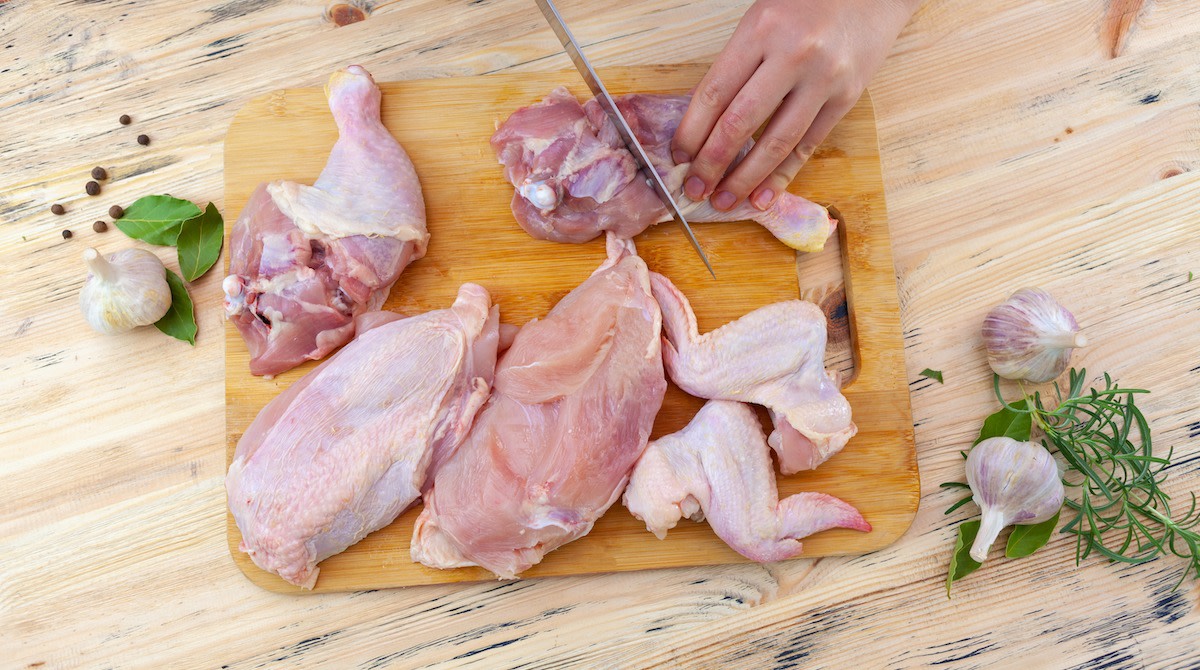How to Debone a Chicken: Step-by-Step Guide
Written by MasterClass
Last updated: Nov 30, 2021 • 3 min read
Whether you buy chicken from the grocery store, a butcher, or your local farm, finding certain deboned cuts can be challenging. Learn how to debone a whole chicken so that you can add this essential skill to your repertoire.
Learn From the Best
Why Debone Chicken?
Whole chickens are usually cheaper per pound than prepacked parts, so deboning the bird yourself is a great way to save money. As an added advantage, you'll get to keep the chicken bones to make chicken stock and add rich, hearty flavor to homemade soup. Additionally, grocery stores don’t often sell boneless, skin-on chicken thighs and breasts, so being able to debone at home is a necessary skill for home cooks that want to use these bone-in cuts.
You can use these cuts to prepare taquitos, tacos, marsala, teriyaki chicken, pot pie, or any of your other favorite chicken dishes.
How to Debone Chicken
Deboning a chicken can be a fun challenge for home cooks. It's also an excellent way to develop proper knife skills and meat-handling techniques in your kitchen. Here’s a step-by-step guide to the process:
- Gather the equipment. You'll need a sharp chef's knife or boning knife, as well as a meat cleaver for breaking down large pieces. A paring knife is handy for making small cuts. Poultry shears are another useful tool to cut through joints and skin. You will also need a sturdy cutting board that's large enough to accommodate the whole chicken and its juices.
- Prepare the cutting board. Place a damp dish towel or paper towel beneath the cutting board to prevent it from slipping while you work.
- Remove the innards. Reach inside the raw chicken and remove the liver, gizzards, heart, and neck, if present. Discard or set these parts aside for another use.
- Remove the wingtips. Locate the joint between the wingtip and the flat of the wing. Cut off the wingtip with a sharp knife, then repeat the process on the other side.
- Remove the wishbone. Place the chicken breast-side up with its neck facing you. Lift the neck skin and use your fingers to feel for the wishbone. Starting from the top, make a slit on each side of the wishbone, following its contour with your knife until you reach the shoulder. Use your fingers to pull the wishbone out.
- Cut through the backbone. Place the chicken breast-side down. Make a cut down the center of the backbone, moving from head to tail. Separate the meat from the bone on both sides. Stop cutting when you reach the leg and wing joints.
- Cut through the leg and wing joints. Using poultry shears or your knife, cut through each wing and leg joint to separate them from the backbone, breastbone, and rib cage.
- Remove the backbone and rib cage. Continue to cut around the rib cage, taking care to stay as close to the bone as possible. As you work, the breast meat will become loose from the cage. Remove the rib cage and backbone to finish separating the breast meat.
- Debone the thighs. Working from inside the chicken, cut into the thigh meat and carefully scrape it down and away from the side of the bone until you reach the drumstick. Detach the thigh bone from the drumstick and remove it. Repeat the process for the other thigh.
- Finish trimming. Cut off each wing at the second joint, and remove the bottom inch of each drumstick with your meat cleaver. If desired, continue breaking the bird down into smaller parts, such as boneless thighs and skinless chicken breasts.
- Cook the chicken. You now have a whole boneless chicken that you can leave as-is to prepare boudin-stuffed roast chicken, turducken, or another stuffed poultry dish. Use the deboned chicken to make stir-fry, chicken wings in the air fryer, crispy fried chicken, or any of your other favorite chicken recipes.
Mise En Place
To perfect the mother sauces and make French cuisine at home, you must master essential cooking techniques. Discover Chef Thomas Keller’s approach to setting up a home kitchen and sourcing quality ingredients like fish and clams when you sign up for the MasterClass Annual Membership.
